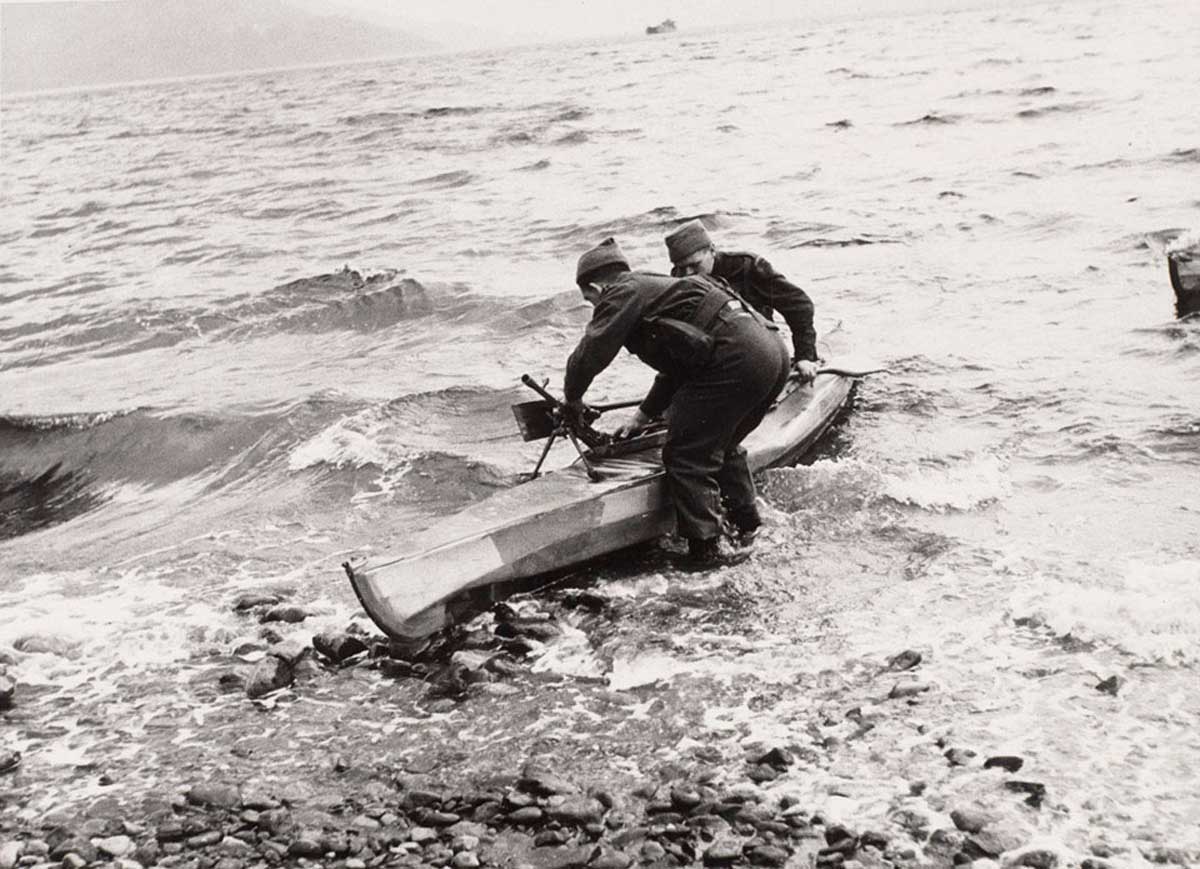Strength and Guile
A history of the Special Boat Service, founded in the dark days of July 1940.

The Special Boat Service is Britain’s original and most secretive special operations unit. Its present incarnation is part of the UK’s Tier 1 Special Forces, which, along with the intelligence services, enables the UK to punch above its weight as a global power, especially in cooperation with the US. SBS operators have to pass the same punishing six-month selection as those of the Special Air Service (SAS), achieved by very few. Based in Poole, with four squadrons, again like the SAS, and a remarkable operational history, a common retort to any condescension from its more famous sister unit is an insouciant ‘Who Dares Swims’.
Why is the SBS’s public profile so low? Partly because the unit has not faced the blaze of publicity from the televised SAS storming of the Iranian Embassy in 1980 and the slew of books by ‘Andy McNab’ and his emulators. But much of it is down to the fact that its origins in the Second World War are little known. This excellent book by Saul David corrects that.
The author sifts a tangled SBS bloodline of army and navy units with confusing acronyms, often deliberately so to deceive the enemy: the RMBPD, COPP and 101 Troop. The acknowledged founder of the SBS was Roger ‘Jumbo’ Courtney, who gave up a prewar job as a clerk to make his fortune in Africa, where he learned bushcraft as a big game hunter (the origin of his nickname) and, crucially, how to operate a well-laden canoe on a 4,000-mile journey down the Nile amid ‘the chilling sight of thousands of crocodiles on either bank’.
Courtney founded a ‘Special Boat Section’ in the dark days of July 1940, after persuading a sceptical navy of the virtue of using submarine-launched collapsible canoes – known as ‘folbots’ – to wreak havoc on the enemy coastline through sabotage, beach reconnaissance and the landing of secret agents. His requirements of recruits reflect the motto of the modern SBS, ‘By Strength and Guile’: on his desk he had a sign that read in capitals ‘ARE YOU TOUGH? IF SO GET OUT. I NEED BUGGERS WITH INTELLIGENCE.’ He also wanted men who were discreet, ‘even when drunk’.
Enterprise and intelligence, alongside cool courage and preternatural endurance, were in evidence in the SBS’s defining Operation Frankton, led by Major ‘Blondie’ Hasler, whose folbotists paddled 70 miles in December 1942 from the freezing open sea, then up the Gironde to Bordeaux to cripple German blockade runners with limpet mines. This involved negotiating with French civilians, who discovered him three times, passing himself and his canoe off as flotsam under the direct torch beam of a German ship sentry and a five month overland escape to Gibraltar.
David makes a strong case for the strategic importance of the tiny SBS to the Allied victory, such as the landing of a political delegation in North Africa, which persuaded the Vichy French to allow the 1942 Torch landings to go ahead largely unopposed, saving thousands of lives. SBS midget submarines guided in British troops to their beaches on D-Day, after three days submerged offshore in excruciating conditions, during which the SBS men watched through a tiny periscope as German soldiers played football on Sword beach. The Americans refused this crucial assistance, fearing early warning of the invasion, leading to the fatal bunching of their landing forces on Omaha beach.
There are many more examples in this wonderful book. Sadly, we will have to wait longer until the archives of the SBS’s post-1947 operations are opened to learn more.
SBS – Silent Warriors: The Authorised Wartime History
Saul David
William Collins 528pp £25
Buy on bookshop.org (affiliate link)
Rupert Edis is a former Army reservist who writes for Literary Review.